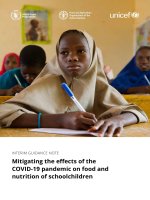On food and cooking the science and lore of the kitchen ( PDFDrive ) 855
Bạn đang xem bản rút gọn của tài liệu. Xem và tải ngay bản đầy đủ của tài liệu tại đây (122.78 KB, 2 trang )
commercially practical in Switzerland just
before World War II. It’s made by brewing
ground coffee near the boil to obtain aroma,
then a second time at 340ºF/170ºC and high
pressure to maximize the extraction of
pigments and body-producing carbohydrates.
Water is removed from the two extracts by
hot spray-drying or by freeze-drying, which
retainsmoreofthevolatilearomacompounds
andproducesafullerflavor.Thetwoarethen
blended together and supplemented with
aromas captured during the drying stage.
Instant coffee crystals contain about 5%
moisture, 20% brown pigments, 10%
minerals, 7% complex carbohydrate, 8%
sugars, 6% acids, and 4% caffeine. As an
essentiallydryconcentrate,instantcoffeeisa
valuable flavoring for baked goods,
confections,andicecreams.
WoodSmoke
andCharredWood
Neitherwoodnorthesmokeitgivesoffisan
herboraspice,strictlyspeaking.Yetcooks
andmakersofalcoholicliquidsoftenuse
burnedorburningwoodasflavoringagents—
inbarbecuingmeats,inbarrel-agingwines
andspirits—andsomeoftheflavorsthey
supplyareidenticaltospiceflavors:vanilla’s
vanillin,forexample,andclove’seugenol.
That’sbecausewoodisstrengthenedwith
massesofinterlinkedphenolicunits,andhigh
heatbreaksthesemassesapartintosmaller
volatilephenolics(p.390).
TheChemistry
ofBurningWood
Charredwoodandsmokeareproductsofthe
incompletecombustionoforganicmaterials
inthepresenceoflimitedoxygenandatthe
relativelylowtemperaturesofordinary
burning(below1,800ºF/1,000ºC).Complete
combustionwouldproduceonlyodorless









